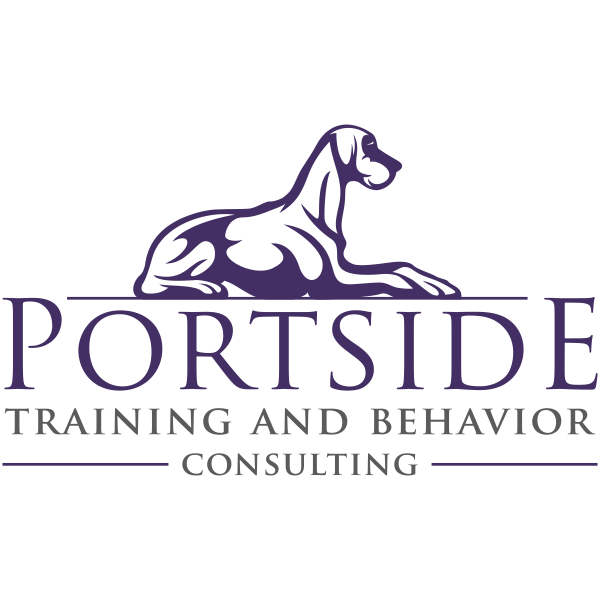How often do you see signs saying to leash your dogs, or hear the phrase “My dog is friendly!”. Probably a lot, these phrases are a keystone of the work that I do. I think the funniest and most surreal interaction I have ever had was in downtown Newburyport. I was setting up a class for reactive dogs. A man and his tiny little dog walk by the man doesn’t have a leash, and the dog is running around off-leash in a parking lot. Admittedly did I offer a lot of kindness, and respect, not really? “Hey buddy, there is a leash law”. Nothing could prepare me for the Uno-Reverse card level response he hit me with “No there isn’t, that isn’t a thing”. I stood there dumbfounded as this guy walked off into the middle of a city parking lot without anything resembling a leash. For the record Mr. I know you are reading this Newburyport does have a leash law, so I win. I had a very different expectation for that interaction than I got. I essentially laid out the demand and had to work through the surprise ending.
There are a lot of interplays between what we expect our dogs to do, what they do, and what we expect other people to do about it. Some people are truly offended when their dogs jump on people, some find it hilarious. There are still some cultural beliefs that hold on about what dogs should do or what are correct manners. Some people really struggle with the idea to let their dog walk through a door first. We hold onto these ideas and then they affect the way that we let dogs interact with our world. I think we often tend to think of dogs as these robots we set up the software and then hope they run properly. We very often don’t think about the living breathing creature who looks to you for guidance. I think this is one of the major sources of disconnect between people and their dogs. There is this expectation of what your dog should be doing. We expect compliance, we demand they follow every rule, every law, and every expectation of the human world. We know that humans can’t even do this, looking at you Mr. No-Leash Law.
Let’s chat about that expectation. Many people get incredibly frustrated when their dog doesn’t do what we expect them to do. They didn’t sit, or pay attention on their walk, and many times they are met with a stern talking to, yelling, or worse. This is why many people end up using aversive methods because that expectation is not being met. We expect compliance from our dogs. You sit when I say sit, you go outside when I say go outside, and you eat when I say you can eat. When we view the world this way, where we expect that degree of compliance from our dogs, when they don’t do it, we feel slighted. They are doing this to spite me, they are doing this because they don’t understand that I am the alpha the leader of the pack. How could your dog not obey? This framing, outside of it being scientifically outdated and even contested by the original author, is not the kind of relationship I would even want with my dog. I don’t expect myself to do everything right 100% of the time, or as quickly as others might expect; looking at you my pile of laundry. Yet this is what is asked of many dogs across the world.
As a wee lad out of undergrad. I took a job at a retail company that will be unnamed, let us call it P-Mart. I answered the phone one day, and I didn’t say the exact right phrasing and spent the rest of my shift with several different people talking to me about this mistake. I felt so utterly defeated, and that is how I felt I was seen at work. I was the “phone call guy”, no one ever talked about my extra effort to help customers, or jump in to help the other staff. Less than a week later I quit, I felt utterly strangled by that phone cord. The kicker, I was never trained to answer the phone, and I was never given an opportunity to get it right. I was stuck on a station and then I failed to meet the expectation, and I failed because of it. This is the cost of viewing the world through compliance. I was badgered over and over again about my failure. There comes a point where putting in effort doesn’t even matter, you are just going to be wrong anyway and have your failure hang over you. Think about a dog on a prong collar, who keeps getting it wrong. They have joy for the world and that joy is met day in, and day out with a sharp pinch to the neck. Think about that dog on an E-collar, who found a new fun scent and is now being shocked for exploring. We can sap the joy from their world. This is not hyperbole, this is not being poetic, a study published in the journal Nature found that dogs trained using punishment had pessimistic outlooks on life.
This to me is the crux of why R+ is such a change not only in methods but in mindset. We are trying to give dogs and their people the tools to enjoy life and succeed. Moving away from compliance is a monumental shift in perception. In the world of today, there are so few things we truly control. Many people implicitly see their pet as one of the few things they can actually control. This implicit relationship can be the cause of friction which can chip away at your relationship with your dog. We can give them so much joy, and we can make the world a better place for you and for them. We just have to fine-tune our outlook on life. Your dog had an accident on the carpet, well that stinks good thing you have some heavy-duty cleaner. Your dog pulled on the leash? Super now we have a fun teachable moment. Your dog jumped on Grandma again? Sounds like we have some more fun training to do. I want you to recontextualize what “getting it wrong” even means. The behavior that your dog offers isn’t really even possible to be wrong. Think of Dog’s Law. They will do what has worked, and many dogs know how to wear you down and get what they want. Maybe that means barking at you until you go and get their leash for a walk, or a stare-down when it’s time for dinner. Maybe it’s biting someone who got too close to their food bowl, or reacting when a dog went by. It is our job to give our dogs the tools to work through the human world. It is not their failing that they don’t come equipped with all of the skills that a human 9 to 5 world demands.
Let’s say I have persuaded you. That all of this makes so much sense, and you want to move on from a compliance-based approach. What happens when you get it wrong? What happens when you are trying your best, and your dog doesn’t get it quite right, and you lose your cool? You are going to mess this up. You are going to get frustrated. It is OK. I can promise you, this is OK. Conflict is inevitable between any two people in a relationship. This shift in mindset is about finding healthy ways to resolve that conflict. My advice if you are getting frustrated? Stop, take a break, go get a Pup-cup, or a doggy dish, and watch your favorite YouTube video, or T.V. show curled up with your dog. Take a step back and remember what you love about your dog, and know that with enough time, effort, and help you will get where you need to go. Compliance is an outdated model, a husk that we as dog people must molt and grow beyond.


One response to “Compliance”
[…] core components. Least intrusive, is to have the lightest possible touch. We discussed this idea in Compliance, we don’t want to be autocrats demanding every moment from our dogs, we want to be gentle […]